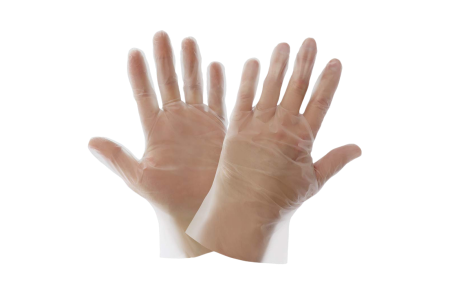Tips for Using TPE Food Service Gloves
Published on 2023/1/6

Share to:
Tips for Using TPE Food Service Gloves
TPE food service gloves are specially designed for the needs of busy professionals, such as cooks and servers. These gloves are often used in fast-food restaurants or cafeterias, where food is prepared quickly and many people are at work all at once.
TPE food service gloves are specially designed for the needs of busy professionals, such as cooks and servers. These gloves are often used in fast-food restaurants or cafeterias, where food is prepared quickly and many people are at work all at once. TPE (thermoplastic elastomer) food service gloves offer many benefits that make them a popular choice for these environments. Here’s everything you need to know about using these gloves.
What is a TPE Glove?
TPE, or thermoplastic elastomer, is a type of synthetic rubber that has a soft and pliable feel when it comes to touching things. It’s like rubber but has excellent toughness and resistance to heat, chemicals, and oil. The material is also strong enough to withstand repeated washing and still retain its original shape. TPE disposable gloves are made of thermoplastic elastomers, which is a type of plastic that has properties similar to rubber. They are generally thinner and more flexible than latex gloves, which makes them ideal for tasks that involve dexterity. TPE gloves are often used by healthcare professionals, food handlers and other people who are in contact with food or bodily fluids on a regular basis.
Benefits of Using TPE Food Service Gloves
- Durability: TPE has excellent toughness and resistance to heat, chemicals, and oil. This means your gloves will withstand repeated washing and still retain their original shape. They are also strong enough to withstand repeated use and still retain their original shape. This makes them great for busy environments, like food service, where gloves are constantly being handled by servers. Their durability means they can be used in high-volume environments, with minimal risk of breakage or damage.
- Touch Feel: TPE is like rubber, but has excellent toughness and resistance to heat, chemicals, and oil. This means that it has a soft and smooth feel when it comes to touching things. It’s like rubber but has excellent toughness and resistance to heat, chemicals, and oil. The material is also strong enough to withstand repeated washing and still retain its original shape. This makes it great for people who need to handle, cook with, or clean with certain items, like a knife.
- Resistance to Sticky Containers: TPE, like rubber, has excellent toughness and resistance to heat, chemicals, and oil. TPE is also resistant to sticky containers, like sticky syrup containers, which means your hands will not stick to them when you’re handling food. This makes it great for food service environments, like cafeterias, where customers may use syrup containers to drizzle sugar on their food.
Differences Between TPE and Other Glove Materials
- TPE is not a vinyl material. The reason why TPE is often mistaken for vinyl is because of its soft feel. You may also hear people talk about vinyl food gloves when they’re talking about vinyl-like food gloves.
- TPE is a synthetic rubber that is similar to polyvinylchloride (PVC) in feeling, texture, and effectiveness but is considered more durable and impervious to chemicals. Since TPE is not made of polyvinyl chloride (PVC), it is not a vinyl food contact material.
Tips for Using TPE Food Service Gloves
- Keep your hands clean. When your hands are dirty, the gloves will get dirty too. This could mean that you’re not using them correctly. Keep your hands clean with soap and water and ensure that there are no visible signs of dirt or grime on them before storing your gloves. Dirty hands could mean that you’re not washing your hands properly or that you’re handling certain items, like certain foods, with your gloves on.
- Make sure that your hands are dry before putting on your gloves. Wearing wet gloves could lead to several problems, including the gloves losing their shape, causing the gloves to be less effective, and having to touch surfaces with your gloved hands while they’re wet, which could lead to bacteria build-up or tearing of the gloves.
- Use a good-fitting glove. Each glove is made differently, and gloves that are too bulky, too tight, or too small could be detrimental to your safety. Make sure to try on each glove to ensure that it fits you comfortably.
- Practice, practice, practice. It’s easy to get caught up in the hustle of work, but taking the time to practice certain tasks with your gloves on will help you to become more comfortable with their use. The more comfortable you are with the use of your gloves, the less time you’ll spend worrying about them and the more time you’ll have to spend on other tasks.


 WhatsApp
WhatsApp
Send us your message
You can send an email asking for the price and detailed information of this product. We will reply you as soon as we receive your email